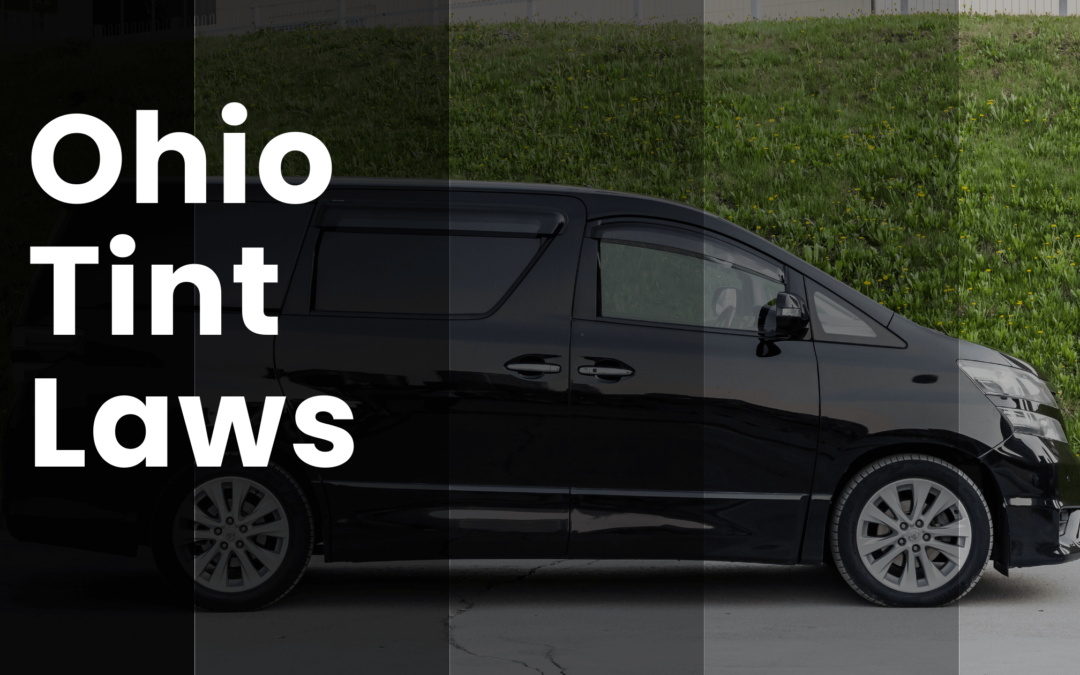Ohio Tint Laws
Ohio enacted its car window tinting laws in 2004 to regulate the darkness and reflectivity of window tints. In this guide, we will delve into Ohio’s window tinting laws, covering tint darkness, reflectivity, and additional guidelines.
Disclaimer
While I have a background in commercial law and strive to provide accurate and informative content, it’s important to note that I am not a legal expert. The information presented in this blog is based on my interpretation of the subject matter, and laws can vary by location and change over time. It is strongly recommended that readers verify all sources of information and consult with legal professionals or relevant authorities before making any decisions related to tint laws.
Understanding the Terminology Regarding Tint Laws
The most important part of the legislation is understanding what VLT is and how law enforcement services check or test the percentage.
What is VLT
VLT, or Visible Light Transmission, is a measure of the amount of visible light that can pass through a window tint or film. It is commonly used to determine the darkness or opacity of window tints, and it’s an important factor in window tinting laws and regulations.
VLT is typically expressed as a percentage. For example, a window tint with a VLT of 20% allows only 20% of visible light to pass through, making it relatively dark and less transparent. Conversely, a window tint with a VLT of 70% allows 70% of visible light to pass through and is much lighter and more transparent.
How do Law Enforcement services test the VLT percentage?
Window tinting laws vary by jurisdiction, and they often specify the maximum allowable VLT for different types of windows on a vehicle, such as the front windshield, front side windows, rear side windows, and rear window. These laws are designed to ensure that drivers have adequate visibility and that law enforcement can see into vehicles for safety and identification purposes. The manner that they go about testing the VLT is by using a VLT gauge/meter.
Here is a YouTube Short from @TrafficServices and @TorontoPolice showcasing the device and how it works. Even though it is in Canada, it still is helpful to understand how the tint darkness is measured.
Window Tint Darkness in Ohio:
The percentage of visible light allowed through your car windows, known as VLT (Visible Light Transmission), varies for sedan cars and SUVs/vans.
Ohio Car Tint Law For Sedans:
- Windshield: Non-reflective tint is allowed on the top 5 inches of the windshield.
- Front Side Windows: Must allow more than 50% of light in.
- Back Side Windows: Sedans may have tints of any darkness on the back side windows.
- Rear Window: Tints of any darkness are permitted for the rear window.
Tint Laws For SUVs and Vans in Ohio:
- Windshield: Non-reflective tint is allowed on the top 5 inches of the windshield.
- Front Side Windows: SUVs and vans must allow more than 50% of light in.
- Back Side Windows: SUVs and vans can have tints of any darkness on the back side windows.
- Rear Window: Tints of any darkness are allowed for the rear window.
| Type of Window | Sedans | SUVs/Vans |
|---|---|---|
| Windshield | Non-reflective tint on the top 5 inches | Non-reflective tint on the top 5 inches |
| Front Side Windows | More than 50% of light transmission required | More than 50% of light transmission required |
| Back Side Windows | Any level of tint darkness allowed | Any level of tint darkness allowed |
| Rear Window | Any level of tint darkness allowed | Any level of tint darkness allowed |
Window Tint Reflection in Ohio:
Window tints can reflect incoming light, reducing glare and heat. Ohio’s tint law permits a certain window reflection when using tints.
Reflectivity laws For Both Sedans and SUVs/Vans:
- Front Side Windows: No reflectorized materials are permitted.
- Back Side Windows: Reflectorized materials are not allowed in the back side windows.
Additional Ohio Window Tint Rules and Regulations:
Ohio’s window tinting laws encompass several other important regulations:
Side Mirrors
Ohio has no specific restrictions on side mirrors.
Restricted Colors
There are no bans on specific window tint colors.
Certificates
Film manufacturers are required to certify the film they sell in Ohio. It is advisable to ask your dealer if they are using certified film.
Stickers
The law mandates a sticker to identify legal tinting, to be placed between the film and glass on each tinted window.
Medical Exceptions
Ohio’s laws do not mention medical exemptions for special tint.
Regulations for Out-of-State Drivers
The same regulations apply to out-of-state drivers as those for drivers living in the State.
If you are from States such as Pennsylvania, West Virginia, Michigan, Kentucky, and Indiana, you are expected to abide by these laws and regulations.
Penalties
Violations are considered misdemeanors and can result in fines of approximately $120.
It’s essential to recognize that interpretations of Ohio’s tinting laws and regulations may vary across counties or places of residence. To ensure compliance, it’s advisable to verify this information with your local Department of Motor Vehicles (DMV) or law enforcement authorities.
Our records regarding Ohio’s window tint laws were most recently updated in 2023. We aim to provide accurate and up-to-date information. Should you encounter any inaccuracies or outdated details, please do not hesitate to contact us. Your trust in our resources is invaluable, and we are committed to offering the most reliable information available.

